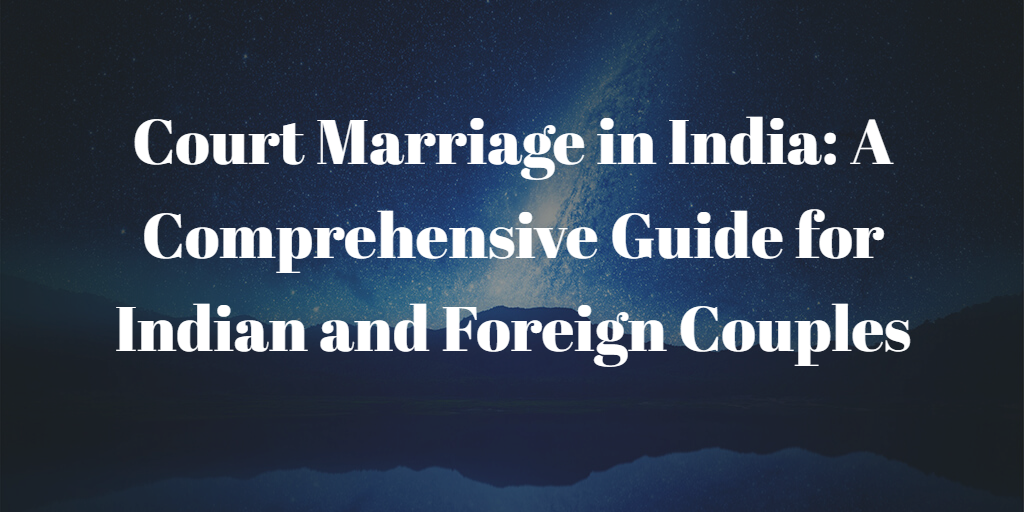Court Marriage in India: A Comprehensive Guide for Indian and Foreign Couples

Table of Contents
Understanding Court Marriage in India
Eligibility Criteria
Required Documentation
Step-by-Step Procedure
Court Marriage for Foreign Nationals
Legalizing Your Marriage in Your Home Country
Seeking Legal Assistance
1. Understanding Court Marriage in India
Court marriage in India is a civil marriage performed under the Special Marriage Act, 1954. It allows couples of different religions or nationalities to marry without adhering to the customs and rituals of a traditional ceremony. Court marriages are legally binding and provide the same rights and protections as conventional marriages.
2. Eligibility Criteria
Before applying for a court marriage in India, ensure that both parties meet the following eligibility criteria:
At least 21 years of age for males and 18 years of age for females
Unmarried or legally divorced
In a sound mental state and possessing the ability to provide legally valid consent
Not related by blood or within the prohibited degree of relationships
3. Required Documentation
To apply for a court marriage, the following documents are required:
Birth certificates (proof of age)
Address proof (Aadhaar card, voter ID, or passport)
Passport-sized photographs
Affidavits confirming marital status and nationality
Divorce decree or death certificate (if applicable)
For foreign nationals: Valid passport, visa, and NOC from the respective embassy
4. Step-by-Step Procedure
Follow these steps to complete the court marriage process in India:
File a Notice of Intended Marriage at the local Marriage Registrar's office with the required documents and fees.
The Marriage Registrar will display the notice for 30 days to allow for objections.
If no objections arise, the Marriage Registrar will issue a Declaration, which both parties must sign along with three witnesses.
The marriage is solemnized, and the Marriage Registrar issues a marriage certificate, which serves as legal proof of the union.
5. Court Marriage for Foreign Nationals
Foreign nationals can also undergo court marriage in India by adhering to the same process as Indian nationals. However, they must provide additional documentation, such as a valid passport, visa, and a No Objection Certificate (NOC) from their respective embassy or consulate.
6. Legalizing Your Marriage in Your Home Country
After the court marriage, foreign nationals may need to legalize their marriage in their home country. The process for this varies depending on the country's regulations. Common steps include:
Acquiring an apostille or authentication for your Indian marriage certificate from the Ministry of External Affairs in India.
Translating the marriage certificate into your home country's official language, if necessary.
Registering the marriage at your home country's embassy or consulate in India.
Submitting the apostilled and translated marriage certificate to the relevant authorities in your home country.
7. Seeking Legal Assistance
Given the legal complexities and documentation requirements for court marriage in India, consulting with a legal professional or marriage consultant can be helpful. They can provide guidance on the necessary documentation, assist with the application process, and ensure a smooth and successful court marriage experience.
By following this comprehensive guide, Indian and foreign couples can better understand and navigate the court marriage process in India. With the proper documentation and adherence to the legal requirements, couples can enjoy a legally binding marriage that offers the same rights and protections as a traditional ceremony.


